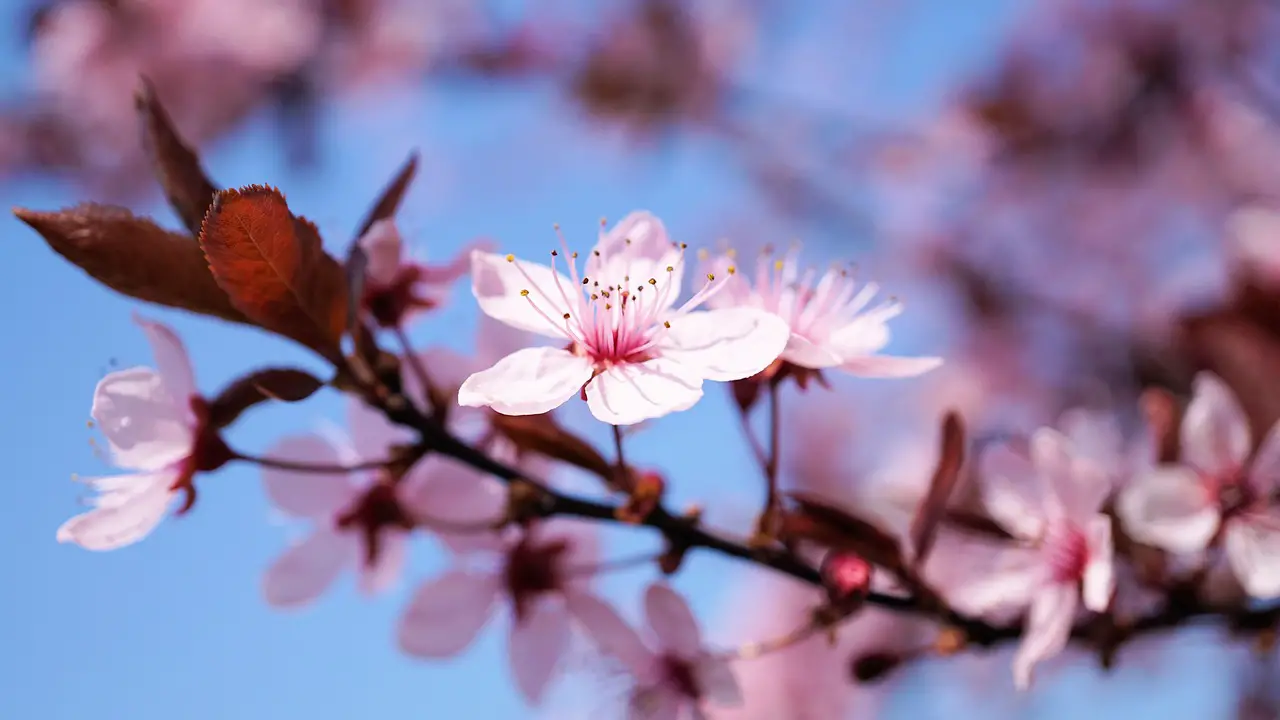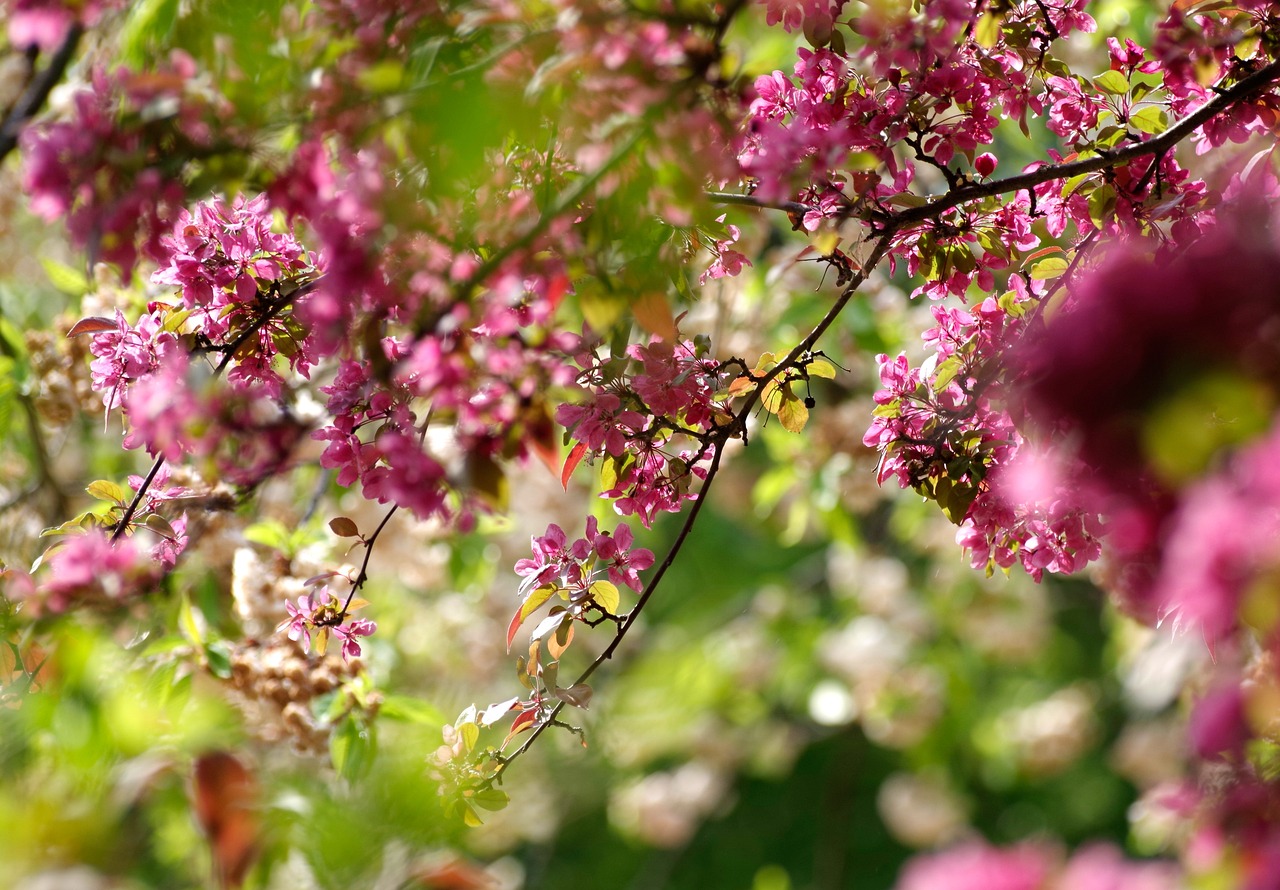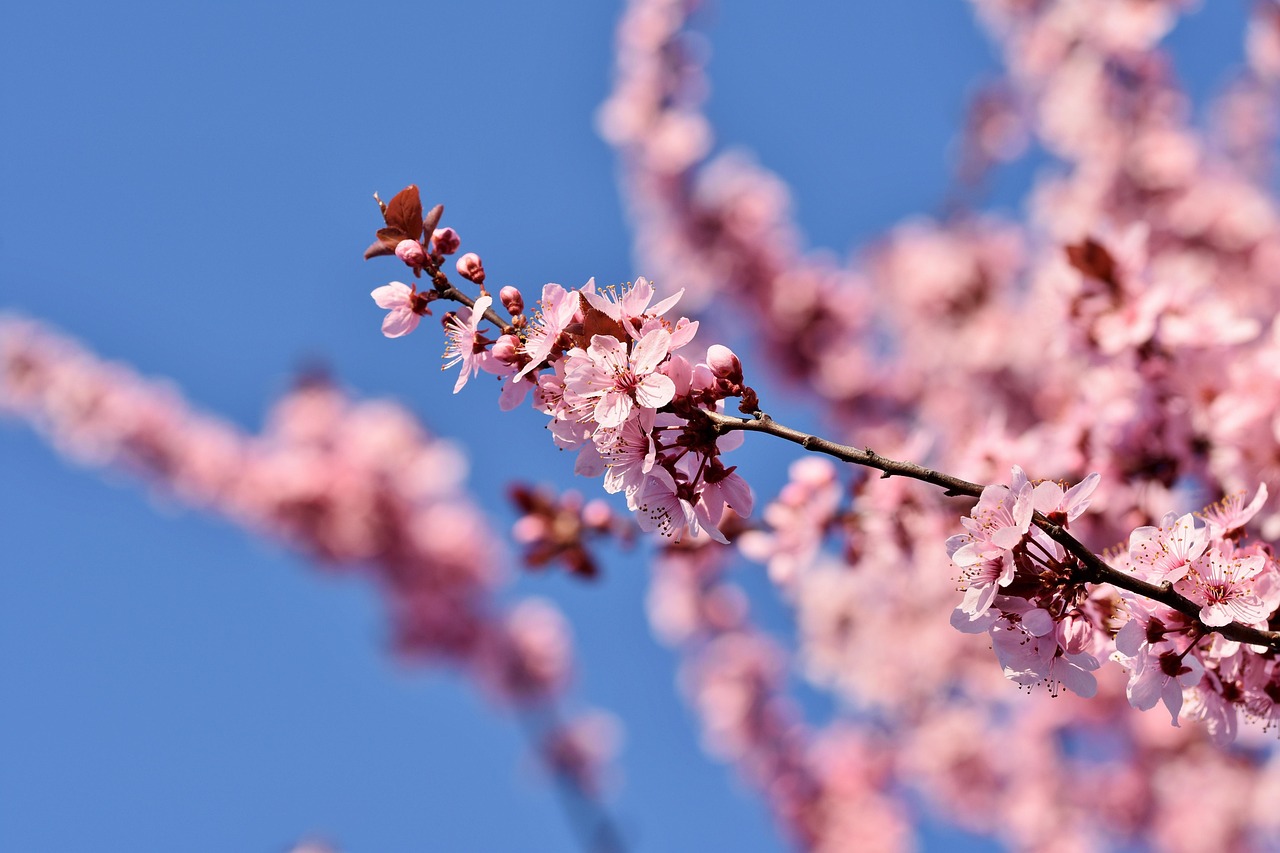The Yoshino cherry tree, known scientifically as Prunus x yedoensis, typically grows at a rate of 1 to 2 feet per year. This growth rate can lead to beautiful springtime blossoms, usually appearing in early April, depending on climate and location.
Yoshino cherry trees are cherished for their stunning spring blooms. They are iconic symbols of spring and beauty in many cultures, especially in Japan. These trees are often planted in parks and along streets, where they create breathtaking displays of pink and white flowers. Their blossoms are not just visually appealing; they also attract numerous pollinators, contributing to local ecosystems.

The growth rate of the Yoshino cherry tree plays a crucial role in its ability to produce these magnificent blossoms. Several factors influence how quickly these trees grow. Understanding these factors can help gardeners and landscapers cultivate healthier trees that yield more flowers.
Factors Influencing Growth Rate
Several key factors affect the growth rate of Yoshino cherry trees. These include:
- Soil Quality: Well-draining soil rich in organic matter promotes better growth.
- Sunlight: Full sun exposure is essential. Yoshino cherry trees thrive best with at least six hours of sunlight daily.
- Watering: Consistent watering, especially during dry spells, supports healthy growth.
- Temperature: The ideal temperature range for optimal growth is between 60°F and 75°F.
- Pests and Diseases: Regular monitoring for pests and diseases can prevent damage that slows growth.
The combination of these factors creates an environment conducive to healthy growth. Gardeners should pay close attention to these elements to ensure that their Yoshino cherry trees flourish.

Growth Stages of the Yoshino Cherry Tree
Understanding the growth stages of the Yoshino cherry tree can provide insights into its development over time. Here’s a breakdown of its growth stages:
- Seedling Stage: This is the initial stage when the tree is first planted. It focuses on establishing roots.
- Juvenile Stage: During this period, which lasts about 3 to 5 years, the tree develops its trunk and branches.
- Mature Stage: At around 10 years, the tree reaches maturity and begins to produce blossoms regularly.
- Full Maturity Stage: After about 20 years, the tree is fully mature and can grow significantly larger while producing abundant flowers each spring.
The growth stages play a significant role in when and how many blossoms a Yoshino cherry tree will produce. During the juvenile stage, the tree focuses on structural growth rather than flowering. This means that patience is essential for anyone planting these trees for their blossoms.
Optimal Conditions for Blossoming
To ensure that Yoshino cherry trees bloom beautifully in spring, certain conditions must be met. Here are some optimal conditions that promote healthy blossoming:

| Condition | Recommendation |
|---|---|
| Soil pH | Between 6.0 and 7.0 |
| Water Needs | Regular watering during dry spells; avoid waterlogging |
| Fertilization | Use a balanced fertilizer in early spring |
| Pest Management | Implement preventative measures against common pests |
| Spacing | Plant at least 20 feet apart to allow for full canopy development |
By providing these optimal conditions, gardeners can enhance the growth rate of their Yoshino cherry trees and maximize their blooming potential. The careful attention to these details will result in vibrant displays each spring, drawing admiration from all who see them.
The beauty of the Yoshino cherry tree not only lies in its stunning blossoms but also in its growth journey. Observing how these trees develop over time can be a rewarding experience for any gardener or nature enthusiast.
Common Challenges in Growing Yoshino Cherry Trees
While Yoshino cherry trees are relatively easy to grow, they do face several challenges that can impact their growth and flowering. Understanding these challenges is essential for successful cultivation.
Pests and Diseases
Pests and diseases can significantly affect the health of Yoshino cherry trees. Some common issues include:

- Cherry Fruit Fly: This pest can damage the tree’s fruit, leading to reduced energy for blossoms.
- Scale Insects: These insects suck sap from the tree, weakening it over time.
- Brown Rot: A fungal disease that affects blossoms and fruits, causing them to rot.
- Powdery Mildew: This fungal infection appears as a white powder on leaves, impacting photosynthesis.
Regular monitoring and appropriate measures can help mitigate these issues. Utilizing organic pesticides and maintaining good air circulation around the tree are effective strategies.
Environmental Stressors
Environmental conditions can also pose challenges. Factors such as:
- Extreme Temperatures: Yoshino cherry trees are susceptible to frost damage in early spring.
- Drought: Insufficient water can stunt growth and reduce flowering potential.
- Soil Compaction: Compacted soil can hinder root development, affecting overall health.
Gardeners should consider these factors when planting and maintaining their trees. Providing adequate protection during extreme weather and ensuring proper soil preparation can improve resilience.
Pruning Techniques for Healthier Growth
Pruning is an essential aspect of maintaining Yoshino cherry trees. Proper pruning encourages healthy growth, enhances flower production, and improves airflow. Here are some key techniques:
When to Prune
The best time to prune Yoshino cherry trees is during late winter or early spring before new growth begins. Pruning at this time minimizes stress on the tree and maximizes blooming potential.
Pruning Methods
- Thinning: Remove crowded branches to improve airflow and sunlight penetration. This helps prevent disease.
- Heading Back: Shorten long branches to encourage bushier growth. Cut just above a bud to promote new shoots.
- Removing Dead or Diseased Wood: Always remove any dead or diseased branches to maintain tree health.
How to Prune Effectively
When pruning Yoshino cherry trees, consider the following tips:
- Use sharp, clean tools to make precise cuts.
- Avoid heavy pruning; focus on light maintenance instead.
- Step back frequently to assess the overall shape of the tree while pruning.
Effective pruning leads to a healthier tree structure, which in turn supports abundant blooming during the spring season. It is a valuable skill that every gardener should develop for optimal tree care.
The Role of Fertilization in Growth Rate
Fertilization is another critical factor in promoting the growth of Yoshino cherry trees. The right nutrients can enhance growth rates and flowering. Here are important considerations regarding fertilization:
Nutrient Requirements
Yoshino cherry trees benefit from a balanced fertilizer that includes nitrogen, phosphorus, and potassium. Each nutrient plays a specific role:
- Nitrogen: Supports leaf growth and overall vigor.
- Phosphorus: Encourages strong root development and enhances flowering.
- Potassium: Improves overall plant health and disease resistance.
Application Tips
The timing and method of application are crucial for effective fertilization:
- Apply fertilizer in early spring as new growth begins.
- Follow the manufacturer’s instructions regarding the amount based on the tree’s size.
- Avoid over-fertilizing, as it can lead to excessive foliage growth at the expense of flowers.
By understanding the role of fertilization, gardeners can significantly enhance the growth rate of their Yoshino cherry trees, leading to more vibrant and plentiful blossoms each spring.
Seasonal Care for Yoshino Cherry Trees
To ensure that Yoshino cherry trees thrive and produce beautiful blossoms in spring, seasonal care is essential. Different seasons require specific attention to the trees’ needs, promoting healthy growth and flowering.
Spring Care
Spring is a vital time for Yoshino cherry trees as they prepare to bloom. Here are important spring care practices:
- Watering: Provide consistent moisture as new growth appears. This is crucial for supporting budding flowers.
- Fertilization: As discussed, apply a balanced fertilizer in early spring to promote robust growth.
- Pruning: Conduct any necessary pruning to shape the tree and remove dead or diseased branches.
- Pest Control: Begin monitoring for pests that may emerge with warmer temperatures. Implement preventative measures as needed.
These practices help set the foundation for healthy growth and vibrant blossoms during the spring season.
Summer Care
During summer, maintaining the health of Yoshino cherry trees is crucial as they actively grow. Here are key summer care tips:
- Watering: Ensure deep watering during dry spells. The soil should remain consistently moist but not waterlogged.
- Mulching: Apply mulch around the base of the tree to retain moisture and regulate soil temperature.
- Pest Monitoring: Continue to monitor for pests and diseases, especially as foliage thickens.
- Weeding: Keep the area around the tree free from weeds that compete for nutrients and water.
By focusing on these aspects during summer, gardeners can support the continued growth of their Yoshino cherry trees, preparing them for the next blooming season.
Autumn Preparations
As autumn approaches, it is important to prepare Yoshino cherry trees for winter. Proper preparations can enhance their resilience against cold weather.
Fall Care Practices
Here are some practical steps for fall care:
- Watering: Water the trees thoroughly before the ground freezes. This helps them survive through winter.
- Fertilization: Consider applying a slow-release fertilizer in late fall to provide nutrients as the tree enters dormancy.
- Leaf Cleanup: Rake and dispose of fallen leaves to prevent fungal diseases from taking hold.
- Tree Guarding: Protect young trees from harsh winds or animal damage using tree guards or wraps.
These practices help prepare Yoshino cherry trees for the winter months, ensuring they remain healthy and ready for the next growing season.
Winter Care and Protection
Winter presents unique challenges for Yoshino cherry trees. Proper care during this season is essential to prevent damage from cold temperatures and snow accumulation.
Winter Protection Strategies
- Insulation: Mulch around the base of the tree provides insulation against freezing temperatures.
- Avoiding Salt Damage: If roads are salted in winter, try to keep salt away from the root zone to prevent harm.
- Sheltering Young Trees: For younger trees, consider using burlap wraps or temporary shelters to protect them from extreme cold and wind.
- Snow Management: Gently remove heavy snow from branches to prevent breakage, but avoid shaking branches vigorously.
By implementing these winter care strategies, gardeners can help their Yoshino cherry trees survive the cold months and emerge healthy in spring.
The Importance of Location and Spacing
The location and spacing of Yoshino cherry trees play significant roles in their growth rate and overall health. Proper placement ensures that these trees receive adequate sunlight and airflow, which are critical for flowering.
Choosing the Right Location
When selecting a location for planting Yoshino cherry trees, consider the following factors:
- Sunlight Exposure: Choose a spot that receives full sun for at least six hours a day. This encourages robust growth and abundant blooms.
- Soil Drainage: Ensure the area has well-draining soil. Poor drainage can lead to root rot and other issues.
- Protection from Wind: Plant near structures or other trees that can provide a windbreak, helping protect delicate blossoms in spring.
Spacing Considerations
The proper spacing between trees is also crucial for their growth. Here are some recommendations:
- Minimum Distance: Plant Yoshino cherry trees at least 20 feet apart to allow for full canopy development.
- Avoid Overcrowding: Ensuring enough space prevents competition for resources and helps maintain good air circulation, reducing disease risk.
- Future Growth Consideration: Keep in mind that these trees can grow quite large, so plan accordingly when planting multiple trees.
The right location and spacing not only support healthy growth rates but also enhance the visual impact of Yoshino cherry trees when they bloom in spring.
Additional Considerations for Growing Yoshino Cherry Trees
In addition to the essential care practices and environmental factors discussed, there are several other considerations that can impact the growth rate of Yoshino cherry trees. Understanding these elements can further enhance the success of cultivating these beautiful trees.
Companion Planting
Companion planting can benefit Yoshino cherry trees by promoting a healthy ecosystem. Consider planting the following species nearby:
- Herbs: Plants like basil and mint can repel pests that may harm cherry trees.
- Flowers: Marigolds and nasturtiums can attract beneficial insects that help with pollination and pest control.
- Legumes: Beans and peas can enrich the soil with nitrogen, supporting tree growth.
Choosing the right companions not only supports the health of Yoshino cherry trees but can also create a more biodiverse garden environment.
Climate Adaptation
Yoshino cherry trees are adaptable but thrive best in temperate climates. Here are some tips for ensuring they adapt well to local conditions:
- Microclimates: Identify and utilize microclimates in your garden that may offer warmer temperatures or protection from harsh weather.
- Winter Protection: In colder areas, consider using protective structures to shield young trees from extreme cold.
- Heat Stress Management: In warmer climates, ensure adequate watering and mulch to prevent heat stress during summer months.
Long-Term Maintenance
As Yoshino cherry trees mature, they will require ongoing maintenance to ensure their health and beauty. Here are some long-term considerations:
- Regular Inspections: Conduct annual inspections for signs of disease or pest infestations. Early detection is key to management.
- Renewed Fertilization: After the initial years, adjust fertilization practices based on the tree’s growth and health needs.
- Aeration: Occasionally aerate the soil around the tree’s root zone to promote healthy root development.
Taking these long-term maintenance steps will help keep Yoshino cherry trees flourishing for many years, allowing them to produce stunning blossoms each spring.
Final Thoughts
The Yoshino cherry tree is a remarkable species admired for its breathtaking springtime blossoms. Understanding its growth rate and the factors that influence it is crucial for successful cultivation. Key aspects include optimal soil conditions, appropriate watering techniques, effective fertilization, and seasonal care strategies. Additionally, awareness of pests, diseases, and environmental challenges plays a significant role in ensuring healthy growth.
By selecting the right location and spacing, practicing proper pruning and maintenance, and integrating companion planting, gardeners can create an environment where Yoshino cherry trees thrive. These trees not only enhance landscapes with their beauty but also contribute to local ecosystems by attracting pollinators and providing a habitat for wildlife.
Caring for Yoshino cherry trees is a rewarding endeavor that connects gardeners with nature. As these trees grow and mature, they offer a sense of accomplishment and joy when they burst into bloom each spring. With careful attention and dedication, anyone can enjoy the stunning display of blossoms that make Yoshino cherry trees a beloved choice for gardens and parks alike.
